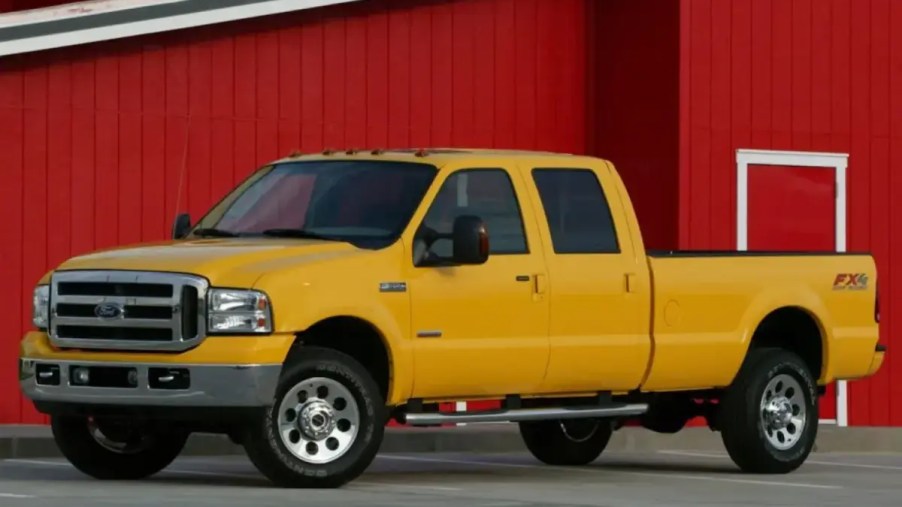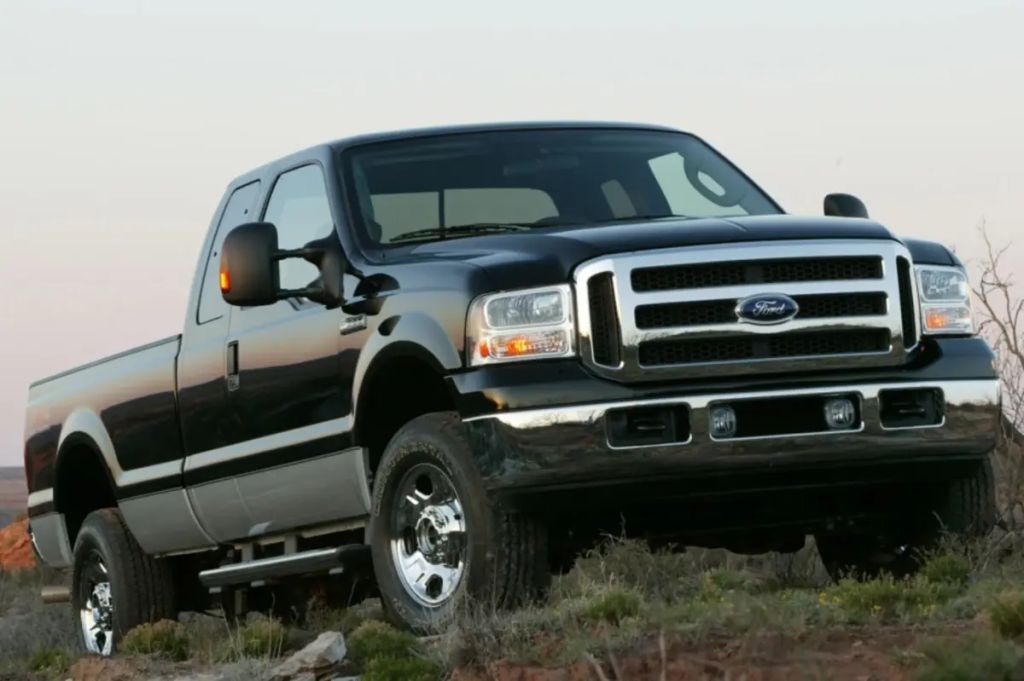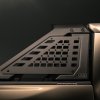
Ford’s 6.0-Liter F-250 Diesel Engine Has Major Flaws
Ford’s 6.0 Power Stroke V8 diesel engines found in its F-250 and F-350 trucks saw their fair share of problems, and lawsuits because of them. The engines were manufactured by Navistar for 2003 to 2007 Ford Super Duty trucks and 2003 to 2010 E-Series vans. Problems range from blown head gaskets and turbochargers to warped head bolts and bad oil coolers. In many cases, the problems result in catastrophic engine failures.
Ford converted the Navistar diesel engines to a series sequential turbocharger or “VGT” system rather than Navistar’s variable vane turbocharger. That means there is a turbocharger for low-pressure and a second for high-pressure. Ford’s VGT 6.0-liter Power Stroke engine pumped out 350 hp and 650 lb-ft of torque at 3,000 rpm. But with emissions requirements getting tighter, Ford had to add numerous emissions equipment to get them to pass. Those included gas recirculation or EGR valves.
By early February 2006, Ford already knew there were problems as warranty repairs were costing the company over $5 million a month. But Ford, based on internal documents, decided not to invest in any engine upgrades. Within a year, warranty costs for Ford ramped up to over $400 million. Of that, over $200 million was for fuel injector replacements, while almost $200 million was for replacement turbochargers.
Ford 6.0-liter F-250 diesel engine oil cooler problems

By February 2007, internal documents show that though the 6.0-liter represented only 10 percent of Ford engines made, it represented over 80 percent of warranty spending. For all Ford warranty costs, it represented over 25 percent of the company worldwide.
Most 6.0 engine failures are because of the oil cooler. They can become clogged from silicone sand. How is that introduced into the engine? It’s always there as part of the casting process. Though the blocks are cleaned before assembly, the oil cooler area traps sand, leading to fine sand floating around the oil passages.
With the oil cooler restricted, it raises the heat of the oil. This degrades O-rings and gaskets. Coolant flow to the EGR cooler can cause it to fail as well. Two ways to determine if this is happening is to first, see if there is oil in the coolant.
Ford 6.0-liter F-250 diesel oil pressure

The other is to test the temperature of both the coolant and the oil. They should be about the same temperature. If not, then a clogged or failing oil cooler could be the issue. One way to help avoid this happening is to tie in an additional filter into the oil cooler line. Make sure you replace it on a regular basis.
A lot of the 6.0-liter engine’s problems lay with the high-pressure oil system or HPOS. Leaking O-rings and Snap-to-Connect oil fittings. These STC fittings saw a 100 percent failure rate. They were discontinued in 2007.
If you still have one of these fittings in your Super Duty, it will absolutely fail. The Injection Control Pressure sensor, high-pressure oil pump, or failed Injection Pressure Regulator is to blame in most cases. And choosing an aftermarket oil filter can add to the problems because it doesn’t contain all of the debris flowing through it.
Ford 6.0-liter diesel engine EGR cooler

The EGR cooler is part of the system introducing exhaust back into the intake manifold to be re-burned. It is an addition to the 6.0-liter emissions equipment that became mandated by the feds in 2003. If it fails, it allows coolant to leak into the intake manifold and enter the cylinders. You may notice white smoke from the exhaust if this happens. This slowly depletes the coolant, but more concerning is that it can cause the engine to hydro-lock. With that comes catastrophic engine failure. That means no chance of rebuilding the engine.
In 2003, Ford used a round EGR cooler according to Dieseliq. From 2004 to 2007, Ford replaced it with a square version. That round EGR cooler is less prone to clogging, which is usually what causes it to fail. So you may want to replace the square with the round as a precautionary fix.
Other issues with the 6.0 include HEUI injector issues, problems with the turbocharger, and TTY head stud failures.
Updated: 6/8/2023



